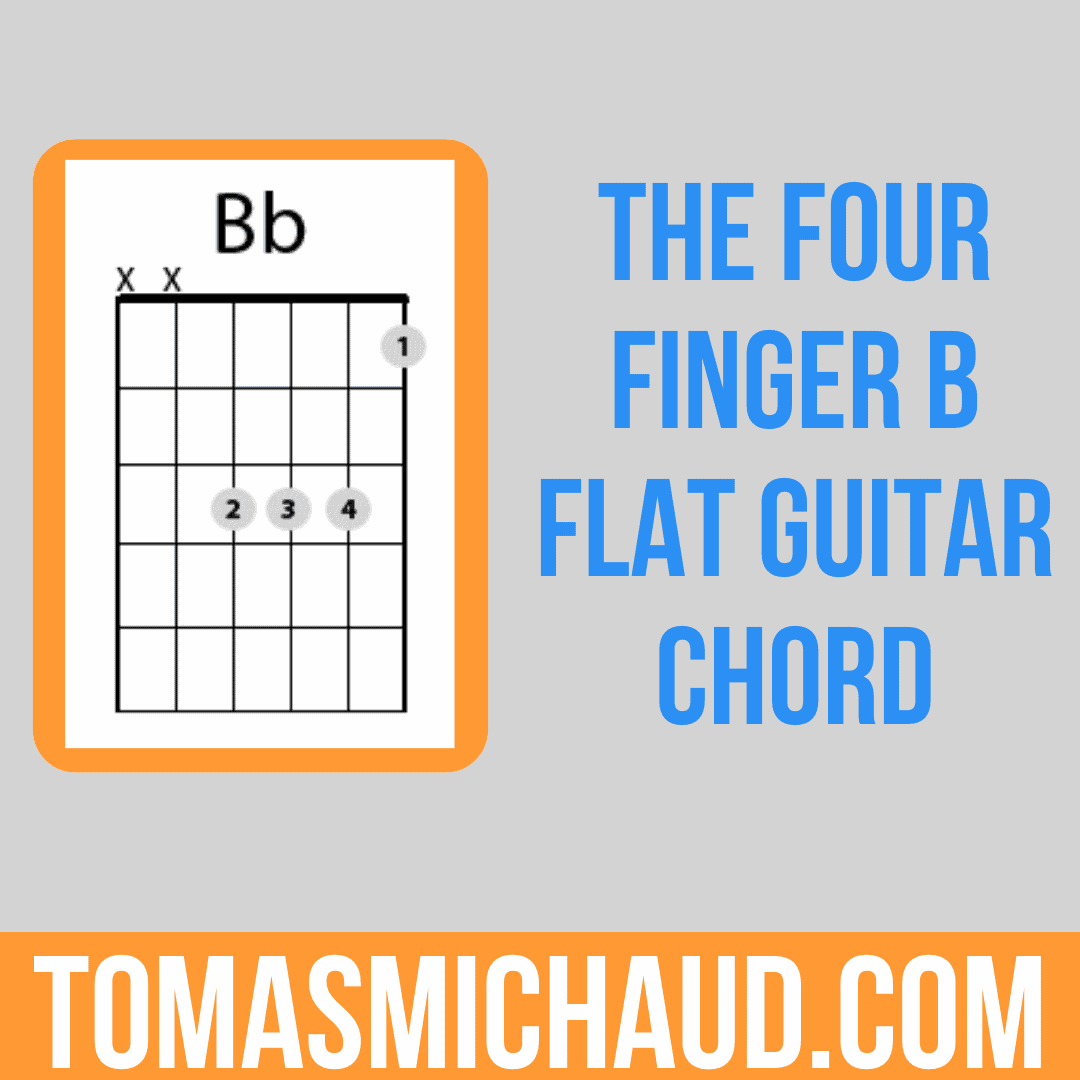
The B Flat Guitar Chord
The B flat guitar chord is one of the most valuable "next step" chords for beginning guitarists. That’s mostly because once you learn the Bb chord it opens up many more songs that you can play.
I'd like to tell you a little about this chord before we get into playing it.
The chord consists of three notes: the B-flat note (also written Bb) which is the root of the chord, the D note and the F note. Even though you can play this chord in many different ways it will always contain only these three notes. When you play different forms the chord you are just playing these notes in different places on the guitar fretboard and with different combinations of doubling some of the notes. When I first understood this it kinda took away some of the mystery.
The version we are going to learn today is the most practical version of the B flat guitar chord. Of course I'm hoping you’ll go on to learn many more form as you progress, but I'm betting you'll always use this version more than any other.
How To Play The B-Flat Chord
I teach students in the beginning to see the chord in comparison to the A major chord which they already know. Try this out.
Make the a chord with your second, third and fourth fingers. Place them side by side on the second fret of the guitar… on the fourth, third and second strings. You are now playing an A major chord if your fingers are all behind the second fret.
Now move all the fingers up one fret (also known as a half step). Put your first finger down on the first fret on the first string. You are now fingering a B-flat major chord. Strike the notes on the top four strings only.

Practicing Your New, Beautiful B-Flat
Take your fingers off the frets and replace them directly without making the A major chord first. Strike each string one at a time and make sure it’s sounding clearly. Adjust your fingers to improve the sound if appropriate.
Most people don't get it perfect at first. After about a minute take your fingers off and shake your hand. Now place the fingers on the frets again and repeat striking each of the notes one at a time and make small adjustments.
Try to get your fingers as close to the frets as possible while not getting them on top of the frets. This makes it easiest to get a good clean sound.
The first finger is likely to angle slightly on the first fret. I find it easiest to get a good sound on the first string when I roll my finger a little bit to the side of my as opposed to pressing directly on the pad. This will make more sense when you watch the video for this lesson.
Once you spent some time practicing fingering the chord in this way you want to go on to using it in a chord changing exercise.
Chord Changing Exercise: Bb Chord to the G Chord
In this exercise you'll strum the B flat guitar chord four times, then strum the G chord four times. Next go back to the B-flat and repeat the process. For this exercise I prefer to use the G chord form that has the pinky in it, but any form will work.

Tell Us What You Think - Please Comment Below!
We would love to hear your comments and questions. What specific things are you struggling with while learning guitar?
Add To Pinterest




Thank you so much! This was very clear and helpful.
I’m trying to write music for a song about Proverbs 3:5,6
“Trust in the LORD with all your heart …”
I have chords A, Bflat, F, D.
Very basic strumming and singing the words from the Proverb with personal application.
Any suggestions for writing music?
Blessings! Happy Thanksgiving.
Hi
Love your style of teaching and already picked up a lot . I’d like to know exactly how to find your site as each time I did it was only by fluke .
Also any emails or notifications from you would be appreciated .
Thank You
Linda
Hi Linda. Just go to https://tomasmichaud.com
– Tomas
Really enjoying your BEGINNING Guitar Series . Everything is well explained and easy to follow.
I’m glad you like it David. -Tomas
How do I continue where I left off without pressing the next button to get to it? Thanks